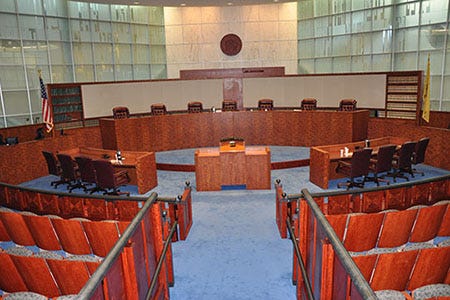
NEW YORK (1010 WINS) — New Jersey’s Supreme Court ruled Tuesday that a 2018 traffic stop for a rear tinted window which led detectives to arrest the driver on gun charges was unconstitutional.

The case is that of David Smith who was stopped in front of a car full of Trenton detectives on a night in 2018 while in his Ford Taurus. One of the detectives said he thought the windows of the car were tinted so they pulled him over, according to testimony.
One of the officers said they saw the driver make several motions as if he was trying to shove something between the driver’s seat and center console as he approached the vehicle. The detectives later found a handgun loaded with hollow-point bullets in that area of the car. Smith was then charged with firearm possession charges as well as the tinted window violation.
Smith’s lawyer later argued that the gun evidence should be suppressed as the detectives performed an unlawful stop because they had not established reasonable suspicion. Robert Bingham, a Mercer County trial judge, denied that motion.
In New Jersey, the law says that tinting, or “non-transparent material,” is not allowed on the front windshield and front-side windows of vehicles; however, it does not apply to rear windows, which was the basis of Smith’s attorney’s argument.
Smith ended up taking a plea deal and was handed a sentence of five years in prison, with a mandatory minimum of more than three years.
The case was brought to an appellate court who ended up siding with the trial judge. They said the cops did not have to prove a traffic violation to pull over a vehicle, the officer only needed to suspect a violation.
When Smith's lawyers tried to appeal further, state prosecutors moved to vacate the charges after determining police did not have reasonable suspicion to stop his vehicle. The Supreme Court allowed the appeal to continue in order to establish precedent for an issue of public importance.
After the Supreme Court’s ruling, police and prosecutors will have to prove reasonable suspicion of a tinted windows violation by proving “that tinting on the front windshield or front side windows inhibited officers’ ability to clearly see the vehicle’s occupants or articles inside.”


